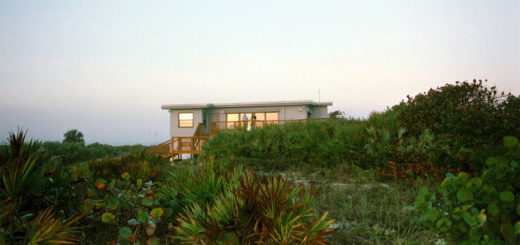Teotihuacan Structures. Alien artifacts

At its peak around 500-600 A.D., Teotihuacan contained perhaps 200,000 people. It was a well planned city covering nearly eight square miles and larger and more advanced than any European city of the time. Its civilization was contemporary with that of ancient Rome, and lasted longer – more than 500 years.
Though archaeologists have long been fascinated with the site, Teotihuacan’s culture and history are still largely mysterious. The civilization left massive ruins, but no trace has yet been found of a writing system and very little is known for sure about its inhabitants, who were succeeded first by the Toltecs and then by the Aztecs.
The Aztecs did not live in the city, but gave the place and its major structures their current names. They considered it the “Place of the Gods” – a place where, they believed, the current world was created.
This sacred, truncated edifice stood 210 feet high and 650 feet square, a vast pyramid of rubble, adobe mud, and earth all faced with stone. A wooden temple on the summit of the pyramid afforded a spectacular view of the sprawling city below.
The pyramid is actually a succession of pyramids built one on top the other over the centuries. The pyramids and many other structures at Teotihuacan are stepped, rather than smooth sided like the Egyptian pyramids, and the stones of which they are made are not as large as stones used to build Egyptian pyramids.
At its peak time – most of Teotihuacan was plastered, and the pyramids were painted bright red.
Another fascinating feature of some of the pyramidal structures is that they contain a broad, thick layer of mica, which had to be brought from Brazil, over 2000 miles away! Mica is very flaky and fragile, yet it was brought in very large pieces from great distances (and without wheeled vehicles). Then the mica was used on an inner layer of the pyramid, not where it could be seen.
Why? One characteristic of mica is that it is used as an insulator in electronic and electrical things. Was that its purpose here? Another mystery of Teotihuacan.
In 1971, a large cave underneath the Pyramid of the Sun was discovered which throws light on why the pyramid was constructed, and perhaps even on why Teotihuacan itself was built where it was.
The cave is actually a natural lava tube enlarged and elaborated in ancient times. The Teotihuacan Valley is a side valley of the Valley of Mexico and is one of a number of natural basins in the midst of an extensive region of volcanoes, therefore, there are many caves formed from the tubes of old lava flows.
The ancient use of the cave predates the pyramid. Aztec tradition placed the creation the Sun and Moon, and even the present universe, at Teotihuacan.
In Pre-Spanish Mexico, such caverns were symbolic wombs from which gods like the Sun and the Moon, and the ancestors of mankind, emerged in the mythological past. This is an immensely holy spot and the memory of its location persisted into Aztec times.
 History of Teotihuacan
History of Teotihuacan
•100 BC – 0 AD Proto-Teotihuacan (two small hamlets in northern pocket of Valley of Mexico, population = 5000)
•0 BC – 150 AD Teotihuacan I – (Avenue of the Dead, Pyramid of the Sun established)
•150 AD – 300 AD Teotihuacan II – (Grid pattern established)
•300 AD – 650 AD Teotihuacan III – (Pinacle of development, population = 85,000-200,000)
•650 AD – 750 AD Teotihuacan IV – Decline and fall
Besides the major ceremonial pyramids, there were also palaces and temples, especially near the north end of the city surrounding the plaza in front of the Pyramid of the Moon. These included the Palace of Quetzalcoatl, the Butterfly Palace, the Temple of the Feathered Conches, and the Palace of the Jaguars.
The sophistication and artistry of the Teotihuacanos can be seen everywhere in the magnificent murals and stone carvings which adorn the walls of the palaces and apartment compounds.
The city met its end around 700 AD through deliberate destruction and burning by the hand of unknown invaders. Although a century earlier, around AD 600, almost all of Teotihuacan’s influence over the rest of Mesoamerica had ceased, indicating some sort of internal malaise or decline before the destruction.
The first strains appeared about AD 650. A century later, Teotihuacan was a shadow of its former self. The population had declined so rapidly that the once-proud city was now little more than a series of hamlets extending over an area of about a square kilometer.
Some great catastrophe apparently struck the city in AD 700, reducing its population to below 70,000. Many of its people moved eastward. The city was deliberately burnt and destroyed. Over the years, its buildings collapsed and the pyramids became overgrown with dense vegetation.
Teotihuacan’s decline was almost as rapid as its rise to prominence. Even so, eight centuries later, Teotihuacan was still revered far and wide as an intensely sacred place. But no one remembered who had built it or that tens of thousands of people had once lived there.
Away from the Avenue of the Dead, the city continued to live on for another two centuries, although the population of Teotihuacan sunk to only a quarter of its former total. Some sort of crisis overtook all the Classic civilizations of Mesoamerica (including the Maya) two centuries later, forcing them to abandon most of the cities.
Some anthropologists believe the crisis may have been a lessening of the food supply caused by a drying out of the land and a loss of water sources to the area.
 They speculate that this might have been brought about by a combination of natural climactic shift towards aridness that appears to have happened all over Mexico during the Classic period and the residents having cut all the timber in the valley. Originally there were cedar, cypress, pine, and oak forests; today there are cactus, yucca, agave, and California pepper trees. This change in vegetation indicates a big climate shift.
They speculate that this might have been brought about by a combination of natural climactic shift towards aridness that appears to have happened all over Mexico during the Classic period and the residents having cut all the timber in the valley. Originally there were cedar, cypress, pine, and oak forests; today there are cactus, yucca, agave, and California pepper trees. This change in vegetation indicates a big climate shift.
Although Teotihuacan presents a puzzle to archaeologists because it was a huge city that appears to have arisen without antecedents, the single most important fact which archaeologists have learned about the Classic period in Mexico was the supremacy of Teotihuacan.
As the urbanized center of Mexico, with high population and tremendous production, its power was imposed through political and cultural means not only in its native highland habitat, but also along the tropical coasts, reaching even into the Maya area. It’s trading and tribute empire was comparable with the Aztec empire that eventually followed it. All other Mexican states were partly or entirely dependent upon it for whatever achievements they attained.
When Teotihuacan fell, around 650 AD, the unifying force in Mesoamerica was gone, and with it widespread inter-regional trade. The Late Classic period saw increasing fractionalization among cultures. In the place of great states, petty kingdoms and militarism arose. From the highpoint of civilization at Teotihuacan, wars became the rule of the day, and for those unfortunate enough to be captured, sacrifice to the gods.
Military empires, such as the Toltecs in the twelfth century AD (and later the Aztecs, starting in fourteenth century AD), which grew up from these warring factions were the cultures met by the Spanish in 1519 and largely eradicated by 1521.
Probably the reason that the Spanish were able to conquer the Aztecs in such a short amount of time had less to do with their skill as soldiers and more to do with the fact that the Spaniards physically resembled the descriptions in Aztec legends of the god Quetzalcoatl.
Quetzalcoatl, while symbolized as a feathered serpent, appears also to have been an historic figure – the man credited with bringing civilization, learning, culture, the calendar, mathematics, metallurgy, astronomy, masonry, architecture, productive agriculture, knowledge of the healing properties of plants, law, crafts, the arts, and peace to the native people.
He is pictured as a quite different physical type than the natives – fair skinned and ruddy complexioned, long nosed, and with a long beard. He was said to have arrived by boat from the east, and sailed off again years later promising to return someday.



 Creators of mankind
Creators of mankind Description of “Tall white aliens”
Description of “Tall white aliens” Where they came from?
Where they came from? About hostile civilizations
About hostile civilizations The war for the Earth
The war for the Earth “Tall white aliens” about eternal life
“Tall white aliens” about eternal life Video: “Nordic aliens”
Video: “Nordic aliens” Aliens
Aliens Alien encounters
Alien encounters The aliens base
The aliens base UFO
UFO Technology UFO
Technology UFO Underground civilization
Underground civilization Ancient alien artifacts
Ancient alien artifacts Military and UFO
Military and UFO Mysteries and hypotheses
Mysteries and hypotheses Scientific facts
Scientific facts


















